20 iconic tunnel megaprojects, ranked by cost
The world's most iconic tunnel megaprojects
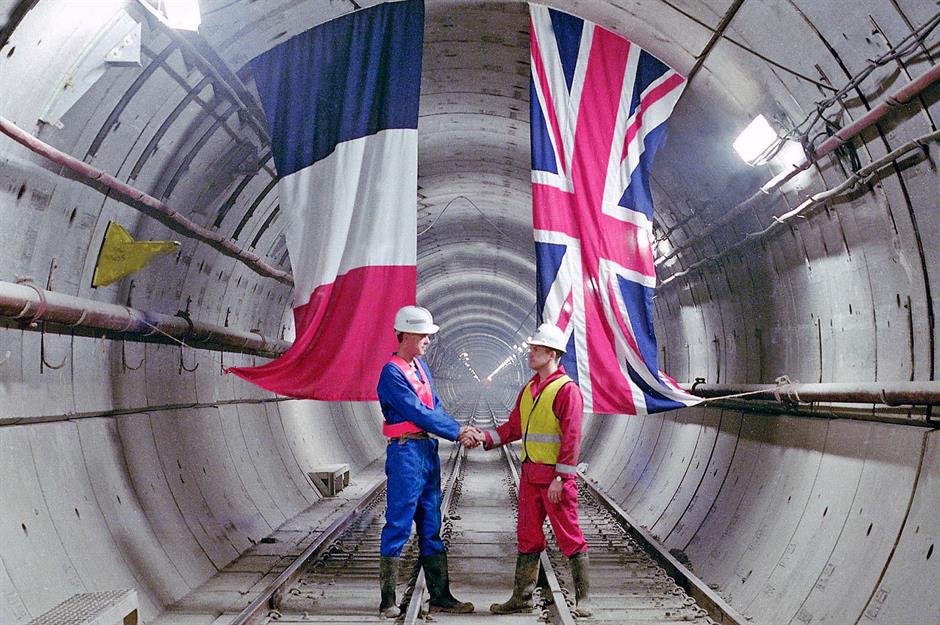
Throughout history, much of the valuable infrastructure we depend on daily has been built underground to provide safe transport, drinking water and protection from natural disasters.
Read on to discover 20 of the world's most iconic tunnels that changed how people travelled and even lived, ranked by how much they cost to build.
All dollar amounts in US dollars. Pre-2022 project figures adjusted for inflation.
=19. The Shamulada Tunnel, China: cost unknown
The Shamulada Tunnel opened in 1970 as part of the Chengdu-Kunming railway in China, a project that included six bridges and 11 tunnels. This 4-mile (6.4km) section of tunnel (pictured) was by far the most difficult to build, facing harsh geology and faults as the project passed below mountain ranges and gullies, even encountering bodies of water underground.
It was also the longest tunnel ever constructed in China. Excavation lasted from 1959 to 1966. The total cost of the project is unknown.
=19. CERN tunnels and caverns, Switzerland: cost unknown
Extensive underground construction between 1980 and 2008 helped deliver both the Large Electron Positron Collider (LEP) and the Large Hadron Collider (LHC) particle accelerators at CERN in Switzerland. For the LEP, which shut down in 2000, this included a 17-mile (27km) circular tunnel, requiring three separate tunnel boring machines (TBMs) to excavate 330 feet (100m) underground on a continuously curved path. For the LHC, which started up in 2008, the existing infrastructure needed to be expanded with deep access shafts and colossal caverns spanning 100 feet (30m).
These particle accelerators have contributed to the development of the internet, cancer proton therapy and major physics breakthroughs, such as the Nobel Prize-winning Higgs boson discovery in 2012. It’s not clear how much of CERN’s budget covered the tunnelling aspect of these projects, but we do know the proposed Future Circular Collider project, which will have a 57-mile (91km) tunnel circle, is estimated at $18 billion (£13bn). A third of the budget is dedicated to tunnel construction.
18. Gjøvik Olympic Mountain Hall, Norway: $27 million (£20m)
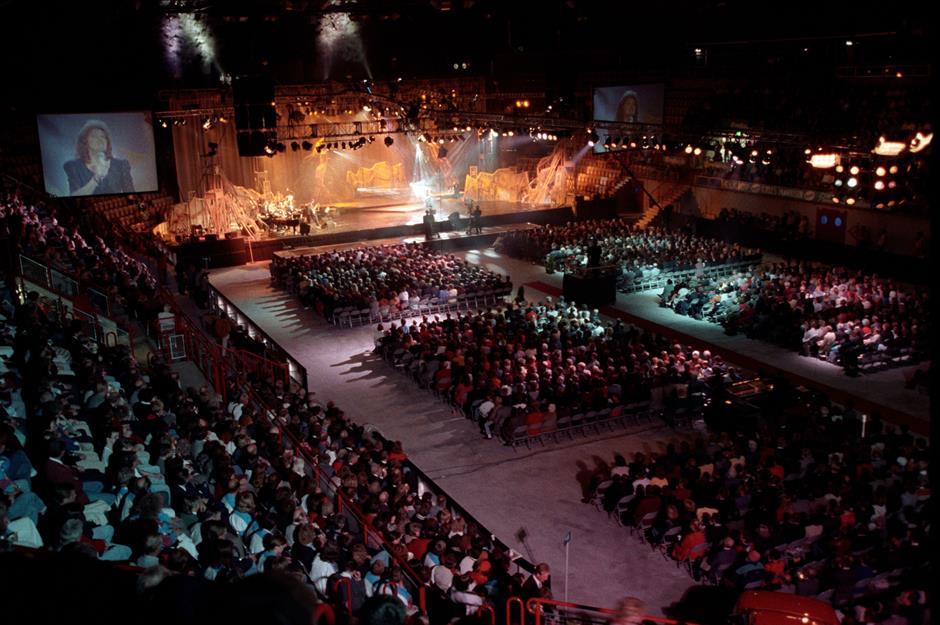
Built to host ice hockey games during the 1994 Winter Olympics in Lillehammer, Gjøvik Hallen is the largest hall in the world for public use. It’s also completely underground.
The Municipality of Gjøvik, which chose to build a mountain cavern instead of an outdoor arena, had already built one of the world’s first underground swimming pools in 1974. The hall is roughly nine storeys tall, taking up an entire city block in the town centre, and 394 feet (120m) deep. The project is completely out of view from the surface level and accessible only through tunnels. Around 170 tonnes of dynamite were used to excavate the hall, which can accommodate 6,000 people. Construction finished three months early at a cost of 135 million Norwegian Krone, a snip at around $27 million (£20m) in today's money.
17. Stormwater Management And Road Tunnel (SMART), Malaysia: $740 million (£550m)
Construction started in 2003 on the world’s first dual-purpose stormwater diversion and motorway tunnel, right below the heart of Kuala Lumpur. It works like this: when there is no or very low rainfall, the double-decker roadway is open to traffic. These lanes then close to store stormwater when necessary, preventing devastating flooding in the city. After the storms abate, the tunnels are drained, cleaned and reopened.
To accommodate this marvel of engineering, workers used an extra-large tunnel boring machine with a 43-foot (13m) diameter to create the 6-mile-long (9.7km) tunnel. Since it opened in 2007, the stormwater management and road tunnel (SMART) has been used to divert floodwater more than 40 times. Adjusted for inflation, the tunnel cost around $740 million (£550m) to construct.
16. Mont Blanc Tunnel, France/Italy: $827 million (£611m)
In 1958, work began on a road tunnel between Italy and France under the Alps’ highest mountains. The 6.6-mile-long (10.6km) excavation was twice as long as any existing motorway tunnel at the time, and the scale of the project wasn't the only challenge; the rough geology slowed progress on both the French and Italian sides of the project, requiring more than 700 tonnes of explosives to blast through the rock.
Tunnelling for this single tube, 28 feet wide and 14 feet high (8.6m by 4.35m), took four years, with the French and Italian crews meeting with a discrepancy of just over 5 inches. The two-lane roadway, the deepest in the world, opened in 1965 to much fanfare at a cost reported to be around £25 million. That's $827 million (£611m) today. Another $481 million (£360m) has since been spent on reconstruction and safety upgrades to the tunnel, following a devastating fire in 1999.
15. Sydney Harbour Tunnel, Australia: $840 million (£620m)
The idea of building a tunnel to cross below Sydney’s harbour arose as early as 1885. It took more than 100 years to make it happen, but the end result, which opened in 1992, is considered one of the greatest engineering feats of modern Australia.
From the southern to northern shoreline, crews sank an immersed tube tunnel which connected to mined tunnels under the Sydney Opera House Forecourt. The tunnel's total length is 1.4 miles (2.3km) and it was built at a cost of $840 million (£620m) in today's money.
14. Niagara Tunnel, Canada: $1.5 billion (£1.1bn)
Expanding capacity for the Sir Adam Beck hydroelectric generation complex in Niagara Falls, Ontario, the 6-mile (10km) Niagara Tunnel set a new record when it was completed in 2011 after five years of tunnelling. It used the largest hard rock tunnel boring machine at the time – 47 feet (14.4m) in diameter – a necessity to divert part of the river to the station with a flow rate fast enough to fill an Olympic-sized swimming pool in seconds.
The additional capacity the tunnel provides produces enough power for approximately 160,000 homes, playing a big part in the province’s efforts to close coal-fired generating plants. When it went into operation in 2013, the total cost of the tunnel was C$1.6 billion, the equivalent of $1.5 billion (£1.1bn) today.
13. Gotthard Road Tunnel, Switzerland: $1.6 billion (£1.2bn)
Switzerland’s Gotthard Pass through the Alps has been an important transport route for centuries, so there’s a long history of building tunnels to bypass the area. The only option for vehicular travel, the 10.5-mile-long (17km) Gotthard Road Tunnel opened in September 1980 following 10 years of tunnel excavation through challenging squeezing rock and other complex ground conditions.
At the time, it was the longest tunnel in the world and offered up a route that could be used year-round. The total bill for the build came in at an inflation-adjusted $1.6 billion (£1.2bn). The single tube has two lanes, one for each direction of traffic, and a second tube is currently being excavated in parallel to expand the tunnel’s capacity.
12. Tunnel and Reservoir Plan (TARP), USA: at least $3 billion (£2.2bn)
The Metropolitan Water Reclamation District of Greater Chicago began building its ambitious Tunnel and Reservoir Plan (TARP) in 1975, with parts of the project going into operation in phases from 1981 to 2006. Aiming to address water pollution and problematic flooding, the programme includes four massive, deep underground tunnel systems totalling 110 miles (177km).
Since it became operational, the city estimates that around 95% of stormwater and sewage pollution that previously would have been discharged into local waterways has been rerouted through the deep sewers for treatment instead. TARP quickly became a model for future projects to mitigate pollution around the world. Little information is available on project costs due to its duration and scale, but at least $3 billion (£2.2bn) is believed to have been spent. Reservoir construction is still underway.
11. Tuen Mun Chep Lap Kok Link, China: $3.3 billion (£2.4bn)
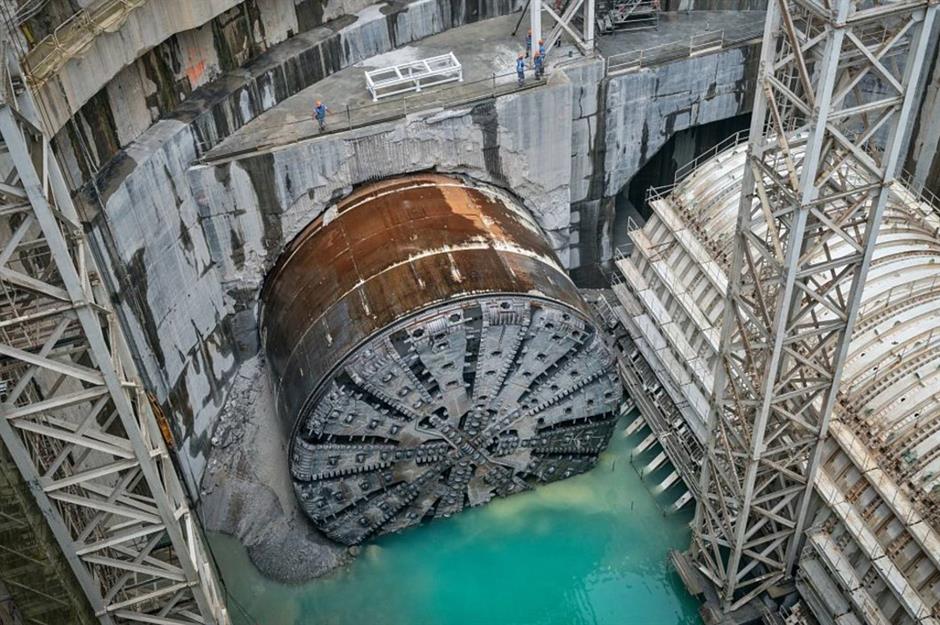
Of all the iconic projects, the Tuen Mun Chep Lap Kok Link twin tube road tunnel in Hong Kong holds the record for the world’s largest TBM.
Construction started in 2015 on 3-mile-long (5km) twin tube tunnels that cross below the sea to connect the airport to the Hong Kong-Zhuhai-Macau Bridge. In addition to the record-breaking size, these machines needed to be built for intense underground conditions, including soft soils and high water pressures. It took five years to mine the tunnels, and the project opened in 2020 at a cost of roughly $2.7 billion, around $3.3 billion (£2.4bn) today.
10. Alaskan Way Viaduct Replacement Tunnel, USA: $4.5 billion (£3.4bn)
The view along Seattle’s waterfront used to be blocked by an elevated motorway known as the Alaskan Way Viaduct. In 2010, construction began to excavate a replacement route in a 52-foot (17.5m) diameter double-decker highway tunnel deep beneath the city. The TBM used to build this project was the largest ever in the world at the time (until the previous entry in our list took its crown) and remains the largest in diameter in North America.
In addition to its size, the project faced another challenge. The machine got stuck early in the mining phase after encountering a steel pipe from a former well, resulting in a major delay to the project, as well as numerous lawsuits.
However, once the machine returned to operation, it completed the 1.7-mile (2.8km) tunnel, and the viaduct has since been removed to revitalise the city’s seafront. The final cost at project completion in 2019 reached $3.3 billion, or $4.5 billion (£3.4bn) today.
9. Snowy Mountains Hydroelectric Scheme, Australia: $5.3 billion (£4bn)
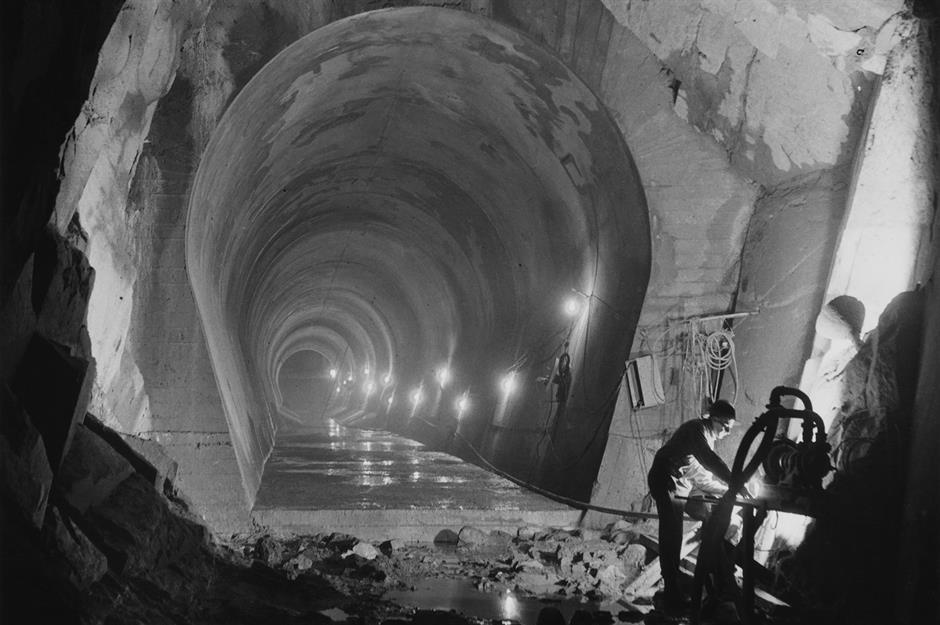
Following the Second World War, Australia sought to establish a more reliable power supply. As part of this, the government began developing the large-scale hydroelectricity and irrigation complex known as the Snowy Mountains Hydroelectric Scheme. This infrastructure includes seven power stations, 16 dams, 140 miles (225km) of tunnels and aqueducts and 995 miles (1,600km) of roads and rail track – all of which are underground, with only 2% visible from the surface.
Unsurprisingly, this massive undertaking took 25 years to build, starting in 1949 and reaching full operation in 1974. The project employed a staggering 100,000 workers, many of whom were refugees from war-torn Europe trying to build a new life. It cost A$820 million to build, the equivalent of around $5.3 billion (£4bn) in today's money.
8. Loetschberg Base Tunnel, Switzerland: $5.6 billion (£4.2bn)
In the 1990s, Switzerland began pursuing extensive tunnel projects to move freight traffic off its motorways and onto a rail network that crosses at the base of the Alps. These base tunnels, as they’re called, required monumental mining efforts through difficult rock, but the completed projects reduce journey times substantially.
Tunnelling for the Loetschberg Base Tunnel near Bern started in 1994, resulting in the creation of two tubes, each 21.5-miles (34.6km) long and 34 feet (10.4m) in diameter. Problems encountered below the Bernese Alps included rockbursts, high heat and a hydrothermal zone with pressures exceeding 100 bar. All this tunnelling work took more than 10 years, and the project opened for high-speed train service in 2007 at a cost of 4.3 billion Swiss francs, or $5.6 billion (£4.2bn) in 2025 money.
7. Egnatia Odos Tunnels, Greece: $9.4 billion (£7bn)
The Egnatia Motorway is one of modern Greece’s major engineering accomplishments and one of the largest projects of its kind built in Europe. Crossing west to east along a former Roman highway that connected Italy and Turkey centuries ago, the roadway largely runs through mountainous terrain. This required 73 twin-tube tunnels for a massive combined length of 62 miles (100km). The longest is the Drisko Tunnel, measuring 2.9 miles (4.6km).
Tunnel construction for the Egnatia Motorway, which started in 1994, encountered a vast range of geological formations and conditions, including weak rock, swelling clays and even landslides. The project opened for service in 2009 at a cost of €6 billion, the equivalent of $9.4 billion (£7bn) in today's money.
6. Shenzhen Metro Line 14, China: $10 billion (£7.4bn)
To build 31 miles (50km) of tunnel for Shenzhen’s Metro Line 14, tunnellers used a whopping 51 boring machines. As with many of the iconic projects on this list, such lengthy excavations crossed a wide swathe of geological conditions that varied from soft ground to super-hard rock. There was also all the existing infrastructure to contend with, from nearby subways and pipelines to sensitive buildings and rivers on the surface.
Remarkably, all of this work lasted just four years, from 2018 to 2022. In terms of cost, it's believed the project had a final price tag of around $10 billion (£7.4bn).
5. Tokyo Bay Aqualine, Japan: $11.2 billion (£8.3bn)
Also known as the Trans-Tokyo Bay, this bridge and tunnel combo represents a massive timesaver for car journeys between Kawasaki City and Kisarazu City, which are separated by more than 62 miles (100km) through the heart of Tokyo. Instead, it’s a 15-minute drive through a 6-mile (10km) tunnel and over a 3-mile (5km) bridge.
Construction started in 1989 using some of the largest diameter excavation equipment ever seen. The entire project cost $11.2 billion (£8.3bn) to build and opened to traffic in 1997.
Pictured is the artificial island connecting the bridge and tunnel. It also has a rest stop and viewing platform, along with shops, restaurants and other amusements.
4. Gotthard Base Tunnel, Switzerland: $16 billion (£12bn)
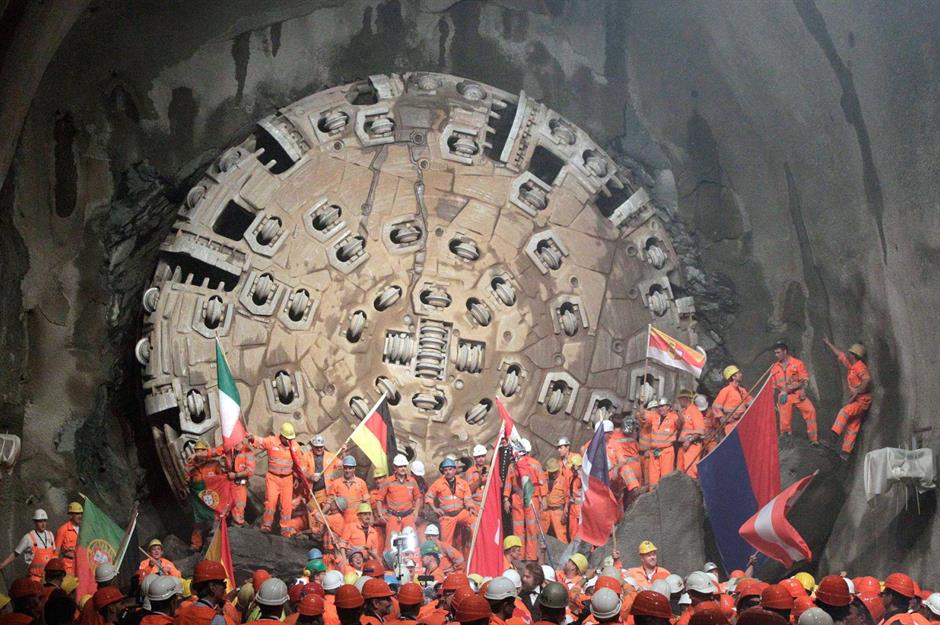
This 35-mile-long (57km) engineering feat is bigger than both the Loetschberg Base Tunnel and the previously excavated Gotthard Road Tunnel combined. Along with the two tubes measuring a total of 95 miles (152km), the works also included two 2,625-foot-deep (800m) shafts to access the tunnels. In one section of the project, crews worked with 7,545 feet (2,300m) of ground overhead, creating temperatures of up to 45°C (113°F).
When the tunnellers on the project made their final breakthrough in 2010 after a decade of construction, the Gotthard Base Tunnel became the world’s longest and deepest rail tunnel. The line opened in 2016 at a cost of $12 billion, or $16 billion (£12bn) today, accounting for inflation.
3. Channel Tunnel, UK/France: $16.2 billion (£12.1bn)
The idea of creating a connection between England and France across the Channel has been around for hundreds of years. There was even an unsuccessful attempt at creating a tunnel, among the many other proposals that never progressed. It wasn't until 1984 that the two countries agreed to pursue the construction of a 32-mile (51km) tunnel, and construction started four years later for three separate bores (one for each direction and a service tunnel). These required 95 miles (152km) of excavation by 11 tunnel boring machines.
An estimated 15,000 workers mined the tunnels at the peak of the construction, digging the bedrock from both sides, with a ceremonial meeting on 1 December 1990 (pictured). Daily expenses for the project exceeded £3 million ($4m), and the total project cost when finished in 1993 was £4.65 billion, or £12.1 billion ($16.2bn) in today's money.
2. Central Artery Tunnel, USA: $23.5 billion (£17.6bn)
A combination of immersed tube and mined tunnels makes up Boston’s Central Artery Tunnel Project. This mammoth undertaking earned the nickname 'The Big Dig' during its construction between 1991 and 2006.
Looking to replace the ageing Central Artery elevated structure that ran through the city, authorities developed a series of road improvement projects to create an underground highway and reduce congestion. The works spanned 8 miles (13km), with nearly half of that in tunnels, and faced numerous engineering challenges, making it one of the most complex infrastructure projects in America. It was also one of the most expensive, costing $14.8 billion or $23.5 billion (£17.6bn) today.
1. Crossrail/Elizabeth Line, UK: $25 billion (£18.8bn)
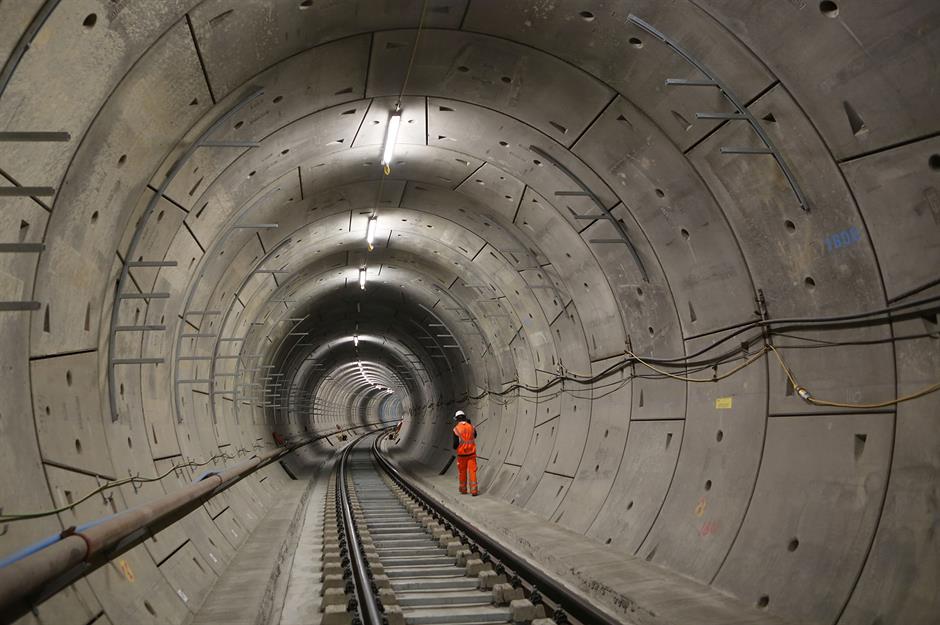
Known as Crossrail during its planning and construction stages, the Elizabeth Line crossing central London and out to the suburbs is undoubtedly an iconic tunnel project. The history dates back more than 50 years, though construction only started in 2009, requiring a total of 26 miles (42km) of tunnel excavation and station construction below many of the most densely populated neighbourhoods in the world.
Tunnelling finished in 2015, though the final completion date for the entire system faced numerous delays until the line opened in May 2022, timed to coincide with the Queen’s Platinum Jubilee. The total cost is the steepest on this list at $25 billion (£18.8bn).
Now discover megaprojects around the world bankrolled by China
Comments
Be the first to comment
Do you want to comment on this article? You need to be signed in for this feature